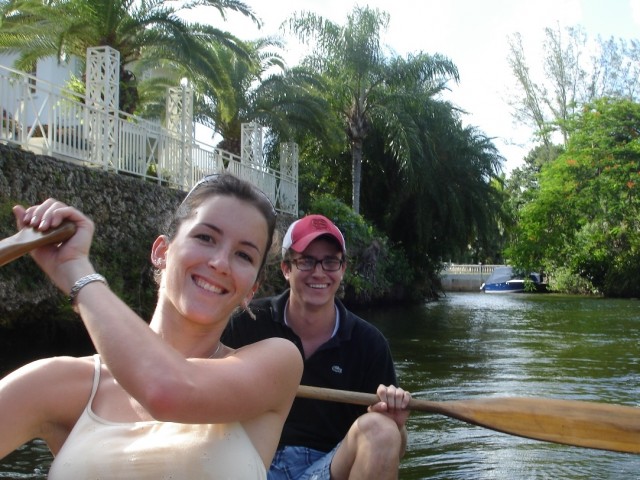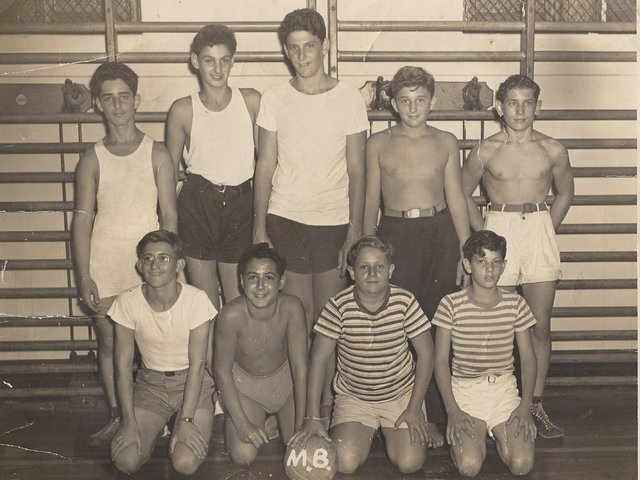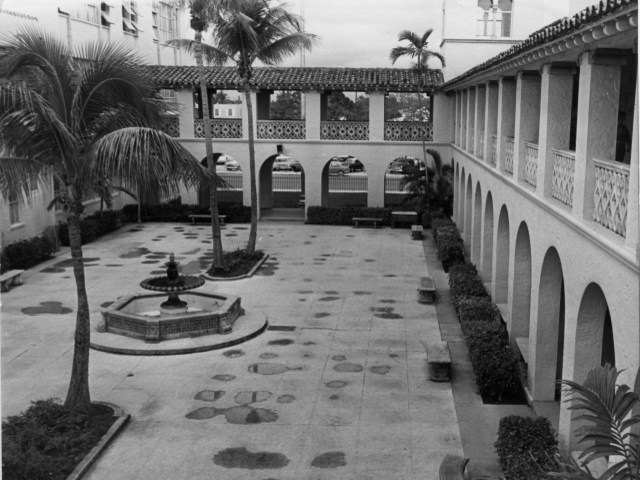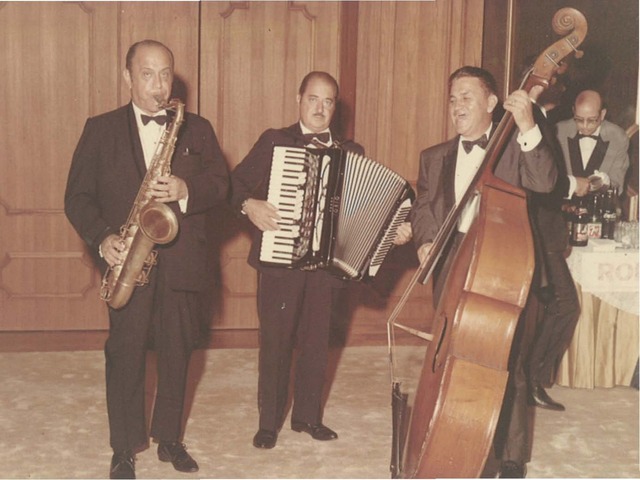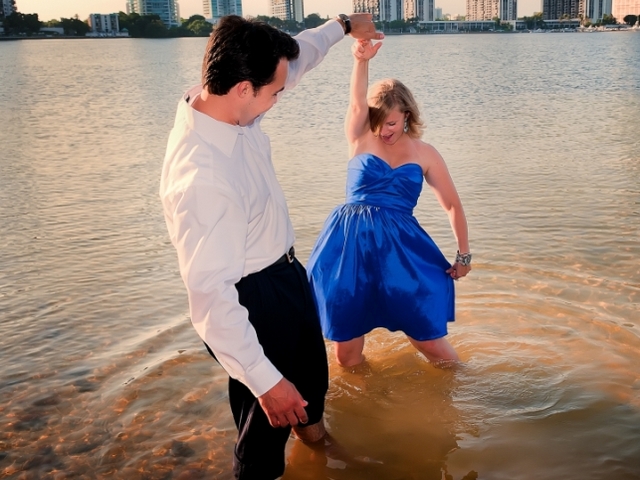We hauled my parent’s aluminum canoe off the roof-rack of his 2002 Mitsubishi Montero and onto the grass near the edge of the Biltmore canal. I grabbed the essentials from the trunk and tossed them into the canoe: two wooden paddles, a foldable, plastic seat, a faded, waterproof cushion, and a couple of well-worn life-jackets.
Larry—the tall, Colombian-American I had just been introduced to a few weeks before—adjusted his maroon FSU hat and repositioned his thick-rimmed eye-glasses before reaching down to help me lift the canoe.
My water bottle rolled towards the stern as we lowered the boat down the grassy bank to the water’s edge. I glanced over my shoulder at Larry, trying to keep the giddiness I felt from showing on my face.
“You ready?” I asked, eager to embark on our first date adventure.
“Let’s do this,” he replied.
I held the canoe steady as he stepped in and made his way towards the back of the boat. Once he was seated, I nudged the boat so that it slid further into the water, until all that was left on the rocky shore was the tip of the bow, just enough to let me climb aboard without having to get my feet wet.
I had been in this canoe countless times before. Growing up in Coral Gables, my parents would often take me and my brother out for a Sunday afternoon stroll along the waterways that snaked their way through our neighborhood and out towards Biscayne Bay.
Our usual route would lead us from the starting point near our house to a spot where the canal dead-ended across from the football fields of Coral Gables High. There, we would spot manatees that had come in from the bay in search of more tepid waters. In the winter time, when cool air graced a muggy Miami and the ocean temperatures dropped, the warm waters of the canal offered a sanctuary for these marine mammals.
From the edge of the water, on-lookers often congregated to count the rounded backs of these dormant sea-cows, which emerged from the surface like buoys. Every few minutes a pair of circular nostrils appeared as a manatee brought its nose up for air. From the canoe, however, it was easier to see through the murky canal water and observe what went on beneath the surface.
With a few quiet strokes of our wooden paddles, we let our canoe glide right up next to them, stuck our hand in the water, and caressed their slimy, algae-covered backs. It was easy to spot the older ones, who were often coated with barnacles and striped with scars from motor boat propellers. The younger ones were more curious, and came right up to the side of the canoe, rolling belly-up and lifting their flippers out from the water as if to offer a high-five.
As Larry and I paddled through the canal on that cloudless, summer day, I was hoping that we would get to see a manatee up close. Larry had grown up in Miami as well, but had never canoed through these parts before, and I was excited about showing him a side of his home town that he had yet to discover.
From the few times we had hung out since our first encounter on a South Beach dance floor the previous month, I already knew he was the type of person who, like me, enjoyed being in nature and staying active. In our first phone conversations, he’d told me about his years playing basketball and running track, about his days owning a longboard and surfing the waves on the northern coast of Florida, and about his plans to hike in Patagonia with some friends that fall. While getting “outdoors” in a city like Miami sometimes felt like a challenge, this, I thought, would be a great way of doing it.
Cruising passed the unique Spanish-style homes that lined the waterway, with their lush, tropical landscaping and beautiful backyards, it wasn’t long before we noticed the wildlife that called the canal their home: a great blue heron perched on a mangrove; a charcoal Anhinga drying out its wings; a giant iguana sun bathing on the coral rock.
At the edge of the lawn to our left, a family of ducks wandered towards the canal, squawking a dissonant tune as they hurried passed the canoe. On the opposite bank, a slender white egret waded in the water, keeping its eyes and beak fixed on the ground below its branch-like legs as it crept towards a potential meal.
And as we drifted down the canal, I thought about how comfortable I felt spending time with Larry. Perhaps it was his laid-back personality, or how he’d been so eager to join me on this canoe ride through the Gables.
Perhaps it was the way he joked about almost anything, and how good it felt to laugh so much whenever we talked. I never expected to find myself starting a new relationship weeks before moving overseas to teach English, but that day in the canoe, as we explored the hidden outdoors of the “City Beautiful” together, I couldn’t help but recognize that being with him just felt right.
And as we slid past a “no wake” sign and turned the corner towards the high school, hearing nothing but the sound of water hitting the sides of the canoe, my eyes fell upon a pair of rounded, barnacle-covered backs emerging from the surface. There in front of us, floating near a dock at the end of the canal, a pair of manatees rested in the tropical waters of Coral Gables.

